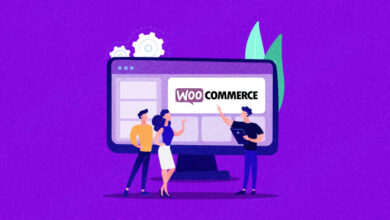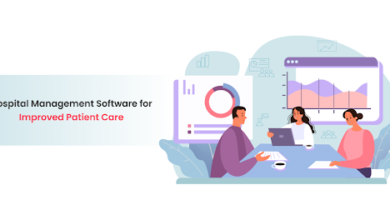Conversational AI for businesses: Building Chatbots with Power Virtual Agents

In the fast-moving landscape of digital engagement, businesses are continually seeking innovative ways to enhance customer interactions, streamline communication, and provide efficient support services. Conversational AI, powered by platforms like Microsoft’s Power Virtual Agents, has emerged, allowing businesses to build intelligent chatbots that revolutionise the way they engage with their audience. This informative guide explores the benefits of incorporating conversational AI into business processes and delves into the capabilities of Power virtual agents.
Understanding Conversational AI
- The evolution of customer interaction:
In the pre-digital era, customer interaction was primarily conducted through traditional in-person interactions, phone calls, and postal correspondence. While these methods allowed for direct communication, they lacked the immediacy and scalability demanded by evolving consumer expectations.
The addition of the internet introduced email communication and online forms, providing a more efficient means of interaction. However, these early digital channels still relied on asynchronous communication and lacked the real-time engagement that modern consumers increasingly desire.
The rise of social media platforms marked a significant shift, enabling businesses to engage with customers in real time. Social media allows for direct interaction, feedback, and brand promotion. Consumers embraced these platforms for quick and public communication with brands.
- Introduction to Conversational AI:
The current era witnesses the widespread adoption of conversational AI. Advanced natural language processing (NLP) and machine learning algorithms enable chatbots and virtual assistants to understand and respond to complex queries more humanistically. This shift aligns with the consumer preference for personalised, context-aware, and interactive experiences.
Conversational AI systems leverage data analytics to offer personalised recommendations and solutions. These systems remember past interactions, understand user preferences, and provide context-aware responses. Real-time engagement is achieved through instant messaging, voice assistants, and chat interfaces, meeting the demand for immediate and dynamic communication.
Modern conversational AI extends beyond a single channel. Businesses now integrate AI across various communication channels, including websites, mobile apps, social media, and messaging platforms. This multichannel approach ensures seamless and consistent interactions, irrespective of the customer’s preferred platform.
- Benefits for businesses:
Conversational AI enables businesses to automate routine and repetitive tasks, freeing up human resources for more complex and strategic activities. Chatbots can instantly respond to common queries, provide information, and guide users through processes, significantly reducing response times.
Conversational AI operates round the clock, offering businesses the ability to provide customer support and engagement at any time. This leads to increased customer satisfaction as users can access information and assistance whenever they need it, eliminating the frustration of waiting for business hours.
Implementing conversational AI can result in significant cost savings for businesses. By automating tasks that would traditionally require human intervention, organisations can optimise their operational efficiency and allocate resources more strategically.
Conversational AI platforms generate valuable data and insights based on user interactions. Businesses can leverage this data to understand customer behavior, preferences, and pain points. These insights inform strategic decision-making and help businesses refine their products, services, and communication strategies.
Power Virtual Agents: Unleashing Conversational Potential
- Overview of power virtual agents:
Microsoft Power Virtual Agents boasts a user-friendly interface designed to simplify the chatbot creation process. With its low-code capabilities, users can visually design chatbot conversations, eliminating the need for extensive coding knowledge.
One of the standout features of Power Virtual Agents is its accessibility for non-developers. The platform provides a no-code/low-code environment, enabling business analysts, customer support teams, and other non-technical users to actively participate in building intelligent chatbots.
Power Virtual Agents offers a library of pre-built templates that cover a spectrum of common scenarios. These templates expedite the chatbot creation process and serve as starting points for customisation.
- Integration with Microsoft Power Platform:
As part of the Microsoft Power Platform, Power Virtual Agents seamlessly integrates with Microsoft Dynamics 365. This integration facilitates the utilisation of data and services from these platforms, enhancing the chatbot’s ability to provide personalised and contextually relevant responses. Businesses can leverage existing data and workflows to create a more unified and streamlined customer experience.
Power Virtual Agents offers real-time testing capabilities, allowing users to preview and fine-tune their chatbots before deployment. Additionally, the platform provides robust analytics to track the performance of chatbots in real-world scenarios. These analytics offer valuable insights into user interactions, enabling continuous improvement and optimisation of the chatbot’s effectiveness.
- Capabilities and Features:
Power Virtual Agents provides a rich repository of pre-built templates, covering a diverse range of scenarios. These templates serve as ready-to-use foundations, allowing users to kickstart their chatbot development process. Whether it’s for customer support, appointment scheduling, or lead generation, these templates expedite the creation of chatbots by providing a starting point that can be customised to specific business needs.
At the heart of Power Virtual Agents is its advanced Natural Language Processing (NLP) capabilities. This feature empowers chatbots to understand and interpret user inputs in a conversational context. By harnessing NLP, chatbots built on Power Virtual Agents can comprehend the nuances of human language, making interactions more natural and intuitive for users. The result is a chatbot that can effectively process queries, provide relevant information, and engage users in meaningful conversations.
Power Virtual Agents incorporates adaptive learning mechanisms that enable chatbots to continuously evolve and improve over time. Through the analysis of user interactions and feedback, chatbots built on this platform can adapt their responses and behaviours. This adaptive learning ensures that chatbots become increasingly adept at addressing user queries and delivering personalised experiences. The more the chatbot interacts, the smarter and more efficient it becomes, fostering an ongoing enhancement of its capabilities.
Microsoft Power platform development and Conversational AI
Microsoft Power Platform encompasses four key components—Power BI, Power Apps, Power Automate, and Power Virtual Agents—unifying data analytics, application development, workflow automation, and conversational AI within a single ecosystem. This integration eliminates silos, fostering a cohesive environment where data, processes, and insights seamlessly flow across different facets of the business.
The integrated nature of Power Platform encourages collaboration among cross-functional teams. Whether it’s the IT department developing custom applications, business analysts creating insightful reports, or citizen developers automating workflows, Power Platform provides a shared space where diverse teams can collaborate effortlessly. This collaborative synergy accelerates development cycles, enhances communication, and ensures that solutions align with business objectives.
Power BI, a core component of Power Platform, empowers businesses with robust data analytics capabilities. By connecting to a variety of data sources, creating interactive reports, and generating actionable insights, organisations can make informed decisions. The seamless integration between Power BI and other components of Power Platform ensures that data-driven insights can be directly incorporated into applications, automation, and conversational AI interactions.
Transforming Business Conversations
Conversational AI, powered by platforms like Microsoft’s Power Virtual Agents, has redefined the landscape of business conversations. From providing real-time support services to revolutionizing automation, intelligent chatbots have enhanced customer interactions. As businesses navigate the ever-changing digital terrain, the strategic implementation of conversational AI emerges as a transformative force, propelling them toward efficient communication, improved customer satisfaction, and sustainable growth. With Microsoft Power Platform development at the helm, businesses can harness the full potential of conversational AI to create a future where meaningful and intelligent conversations drive success.





